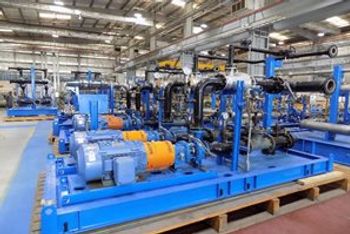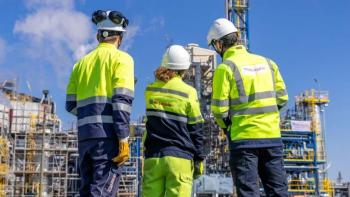
Mee Industries CEO Outlines Benefits of Fogging, Wet Compression for Turbine Performance
Per Thomas Mee, installing fogging and wet compression technology may extract 10 – 20% more power output from the existing gas turbine fleet, countering longer lead times.
Fogging and wet compression systems are emerging as practical solutions for boosting gas turbine power output and improving efficiency, helping operators bridge the gap created by longer turbine lead times. By increasing mass flow and enhancing cooling within the compressor, these technologies can deliver significant performance gains while reducing thermal stress on equipment. The result is a cost-effective way to extend the life of existing assets, stabilize operations, and maximize capacity without waiting for new-build turbines to arrive.
Thomas Mee, CEO of Mee Industries, sat down with Turbomachinery International to discuss these technologies on a technical and industry-wide level, outlining their advantages in boosting overall turbine performance and how they may counter rapidly increasing lead times. He also highlights the company’s ability to deliver lower cost per kW/MW while delivering these systems in swift fashion.
TURBO: On a technical level, how do fogging and wet compression systems help to increase gas turbine power output and efficiency?
Mee: Fogging and wet compressions systems are really the same equipment, but there are different ways of applying each system to a gas turbine. Evaporative cooling cools the inlet air which makes it denser, so there’s more mass flow through the turbine and you get a larger power boost. There’s also an improvement in efficiency as you’re burning less fuel to produce the same amount of energy.
Wet compression consists of injecting water into the inlet of a gas turbine, which then evaporates in the compressor. This intercools the compressor which reduces the work of compression. The compressor is using less energy from the power turbine, providing a power boost, increase in efficiency, and a reduction in emissions per kW or MW of power produced.
TURBO: How will these technologies help to abate the broader issue of rapidly extending gas turbine lead times?
Mee: There are many existing gas turbines using older, more inefficient technology. Fogging, either evaporative cooling or wet compression, can improve the efficiency or increase the output of these turbines. We can take the existing fleet and produce a lot more power—like 10-20% or more in some cases—so you don’t need to buy a new gas turbine as you can install our technology and produce more power.
The cost per augmented kW is much less than a new gas turbine: between $50 – 100 per kW of capacity, which is maybe 10% of the cost for a new turbine. Delivery times are also very short, as order to operation can be 4 – 6 months and sometimes faster on smaller turbines.
Newsletter
Power your knowledge with the latest in turbine technology, engineering advances, and energy solutions—subscribe to Turbomachinery International today.





